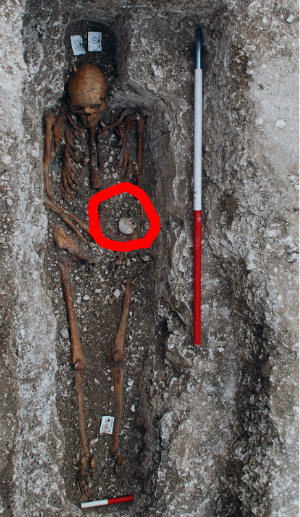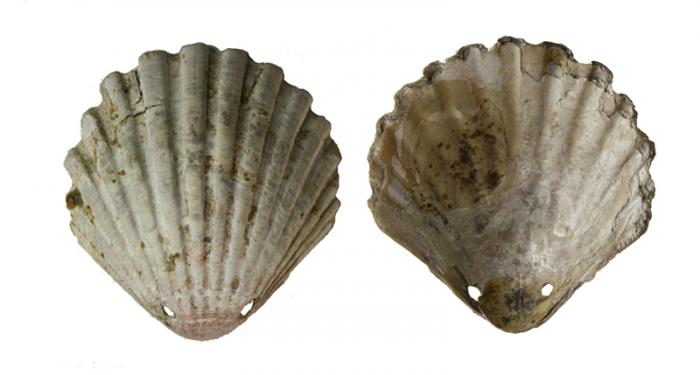We ask you, humbly: don't scroll away.
Hi readers, it seems you use Catholic Online a lot; that's great! It's a little awkward to ask, but we need your help. If you have already donated, we sincerely thank you. We're not salespeople, but we depend on donations averaging $14.76 and fewer than 1% of readers give. If you donate just $5.00, the price of your coffee, Catholic Online School could keep thriving. Thank you.Help Now >
Why was this medieval leper buried with this holy artifact?
FREE Catholic Classes
Researchers have uncovered the grave of an unusual leprosy patient from medieval England. His bones tell a story that could help rewrite our understanding of leprosy and how victims were treated.
We ask you, humbly: don't scroll away.
Hi readers, it seems you use Catholic Online a lot; that's great! It's a little awkward to ask, but we need your help. If you have already donated, we sincerely thank you. We're not salespeople, but we depend on donations averaging $14.76 and fewer than 1% of readers give. If you donate just $5.00, the price of your coffee, Catholic Online School could keep thriving. Thank you.Help Now >

The grave of Sk27 has one notable artifact, a scallop shell which told researchers he was a religious pilgrim.
Highlights
Catholic Online (https://www.catholic.org)
1/27/2017 (7 years ago)
Published in Health
LOS ANGELES, CA (California Network) -- Researchers excavating the graves at St. Mary Magdalene hospital cemetery in Winchester, England have discovered the bones of a medieval leper. He has no name, just the clinical designation Sk27, but they know he was a religious pilgrim who spent his last days in the hospital.
Sk27 had leprosy, so scientists extracted his DNA as well as the DNA of the bacteria that caused his leprosy. The strain of leprosy he has still exists today in parts of Asia, since the disease is very slow to evolve.
This slow evolution is part of the reason why leprosy is no longer an official disease of concern. At the same time leprosy reached its peak in medieval Europe, the same time Sk27 lived, humans began developing a resistance to the disease. In more modern times, a cure has been developed which today the World Health organization provides for free.
In time, leprosy will be extinct. For this reason, scientists want to study the disease and learn what they can, before it is eradicated by human evolution and progress.
What most of us know about leprosy comes from the Bible and pop culture. We know lepers were outcast. There was a fear that leprosy was highly contagious. It was also believed to be a curse for sins committed by the victim or perhaps the ancestors of the victim.
But Sk27 tells a different story.
During the medieval period, lepers were not always outcast, and in some cases they were welcome. Rather than cursed, lepers were seen as blessed, at least for awhile. The suffering caused by the disease was often compared to the suffering of Christ. So not all lepers were outcasts.
In fact, the idea that leprosy was a disease associated with ostracism and outcast is more a Victorian misconception than a medieval one.
Sk27 was a young man, probably in his early twenties, and he came from far away, possible Southern Europe of North Africa. He enjoyed a rich diet while growing up, eating meat and a lot of fish. This suggests he could have come from a wealthy background, or he came from a place where food was abundant.
He was also a pilgrim. There is one tantalizing clue which affirms this: placed in his grave is a scallop shell with two holes for a string. The scallop was a symbol of religious pilgrimage, handed out to those who visited holy sites in Jerusalem, Rome or Santiago de Compostela, Spain. The shell comes from the shrine of St. James in Spain. It was a place people might have visited while seeking a miraculous cure for their illness. About 5,000 pilgrims per day visited the shrine.

A scallop shell like this was given to Sk27, and other pilgrims at the medieval Shrine of St. James in Spain.
For some reason, the graves of the lepers at St. Mary Magdalene's in Winchester were moved, but not Sk27's. His was left. Researchers suspect he may have had some connection to the chapel itself. Was he a particularly devout man? Had he gained the respect of his caregivers? We can only speculate.
By the time Sk27 died, his feet and legs were riddled with lesions, but the rest of his body was probably spared. His face however, would likely have been paralyzed by nerve damage. Perhaps he settled at the hospital, unable to walk without pain.
St. Mary Magdalene's was a place people came to die. Although it was a hospital, there were few attempts to heal patients. Medicine was rudimentary at best and the underlying cause of disease would not be understood for several centuries to come. Instead, patients at the hospital were merely cared for, and provided what meager comforts were possible before their passing.
Sk27's bones are a treasure for researchers. They help us to understand the fading disease of leprosy and how it affected people in the medieval world. Soon, the disease will disappear altogether, existing only in the bones of victims like Sk27.
---'Help Give every Student and Teacher FREE resources for a world-class Moral Catholic Education'
Copyright 2021 - Distributed by Catholic Online








 Daily Readings for Saturday, April 27, 2024
Daily Readings for Saturday, April 27, 2024 St. Zita: Saint of the Day for Saturday, April 27, 2024
St. Zita: Saint of the Day for Saturday, April 27, 2024 Prayer for the Dead # 2: Prayer of the Day for Saturday, April 27, 2024
Prayer for the Dead # 2: Prayer of the Day for Saturday, April 27, 2024


